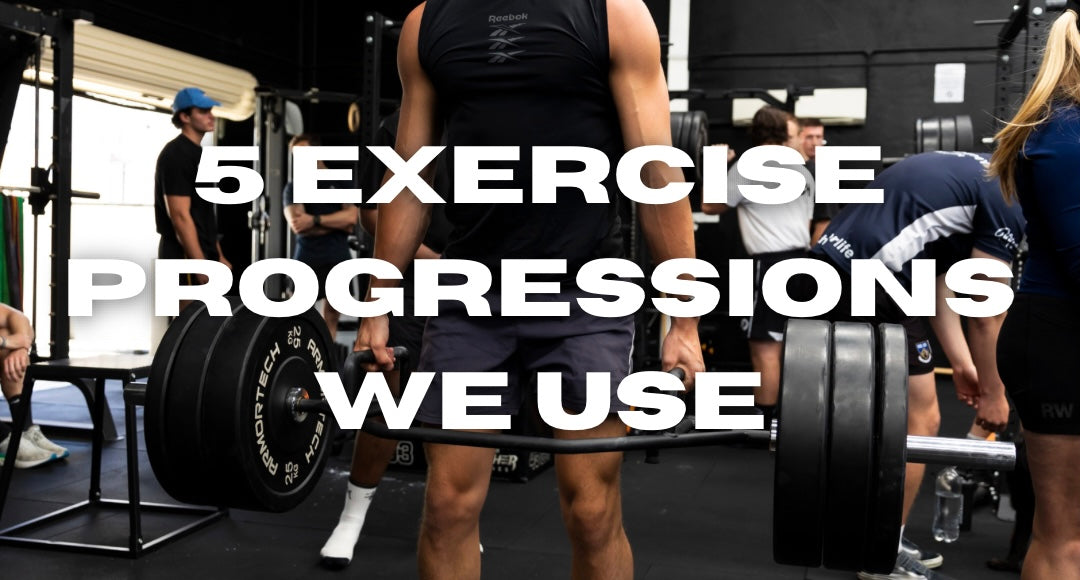
5 Exercise Progressions We Use - Part 1
As we ramp up to the upcoming Exercise Database seminar we thought it would be great time to showcase the thought process of exercise progressions.
But, as always, the context behind why you are changing, progressing or regressing an exercise is what is important, not so much the exercise itself.Now we would like to show you the deeper thought processes behind the why of some of the exercise progressions we utilise with our athletes at HQ.

Lateral sled drag - Crossover step
The lateral sled drag is a great way to introduce the crossover movement. Because you are moving slower whilst dragging the sled it gives your body plenty of opportunity to learn the movement and get comfortable with producing force into the ground at this angle.
Once we have nailed this movement we can challenge the ability to replicate it at higher speeds with a crossover step. This is a movement that naturally occurs during sports all the time so allowing our body to become comfortable in a more controlled environment will set us up better once we are on the court/field.

Single Leg KB Swing - Gallops
Rhythm is a huge part of athleticism and many ‘traditional’ weight room exercises don’t really challenge this as they are just all about one single concentric effort.
Single leg KB swings are a great way to challenge coordination, timing and rhythm of hip extension. Once you have mastered it, a great way to challenge it at higher speeds is with gallops.

Continuous Lateral Bound - Drop to Lateral Bound
Another key aspect of athleticism is to be able to handle and redirect force in different directions.
Continuous lateral bounds challenge the ability to continue and leverage the momentum generated from the previous bound as well controlling your centre of mass as you are moving.
We can then challenge the ability to redirect momentum with a drop into a lateral bound. Rather than just continuing the lateral movement like before we can challenge the transition from vertical to lateral.

RDL - Drop Catch RDL
Sometimes you don’t need to change an exercise to progress. The manner in which you load the exercise and the execution of the exercise can be a way of progressing it.
In a traditional RDL we have a controlled eccentric, with the drop catch you start tall, drop the bar and catch rapidly in the bottom position.
Whilst the RDL is a fantastic exercise for building strength in the hamstrings and powerful hip extension, the drop catch is more specific to the muscular actions you experience in sports. A rapid eccentric action is typically where hamstring injuries can occur, so throwing this progression into your training can help to improve performance and reduce risk of injuries.

Oscillating Split Squat - Split Exchange Leap
Continuing with the contract-relax theme, oscillating exercises are a fantastic way to challenge this muscular action under load and a great bridge between lifting and plyometrics.
Oscillating split squats are a great way to challenge the muscular action in a more controlled environment. Then progressing the split exchange leaps further challenges the muscular action under a greater velocity as well as coordinating the legs and rhythm/timing.
To learn more about exercise selection following along with the upcoming Article series. For Perth Personal Trainers, Physiotherapists and Strength & Conditioning wanting to get hands on practical experience in the Exercise Progression field. You can grab yourself at ticket for the upcoming Exercise Database seminar on the 22nd April at Perform HQ.
Written by Adam Komatsu.